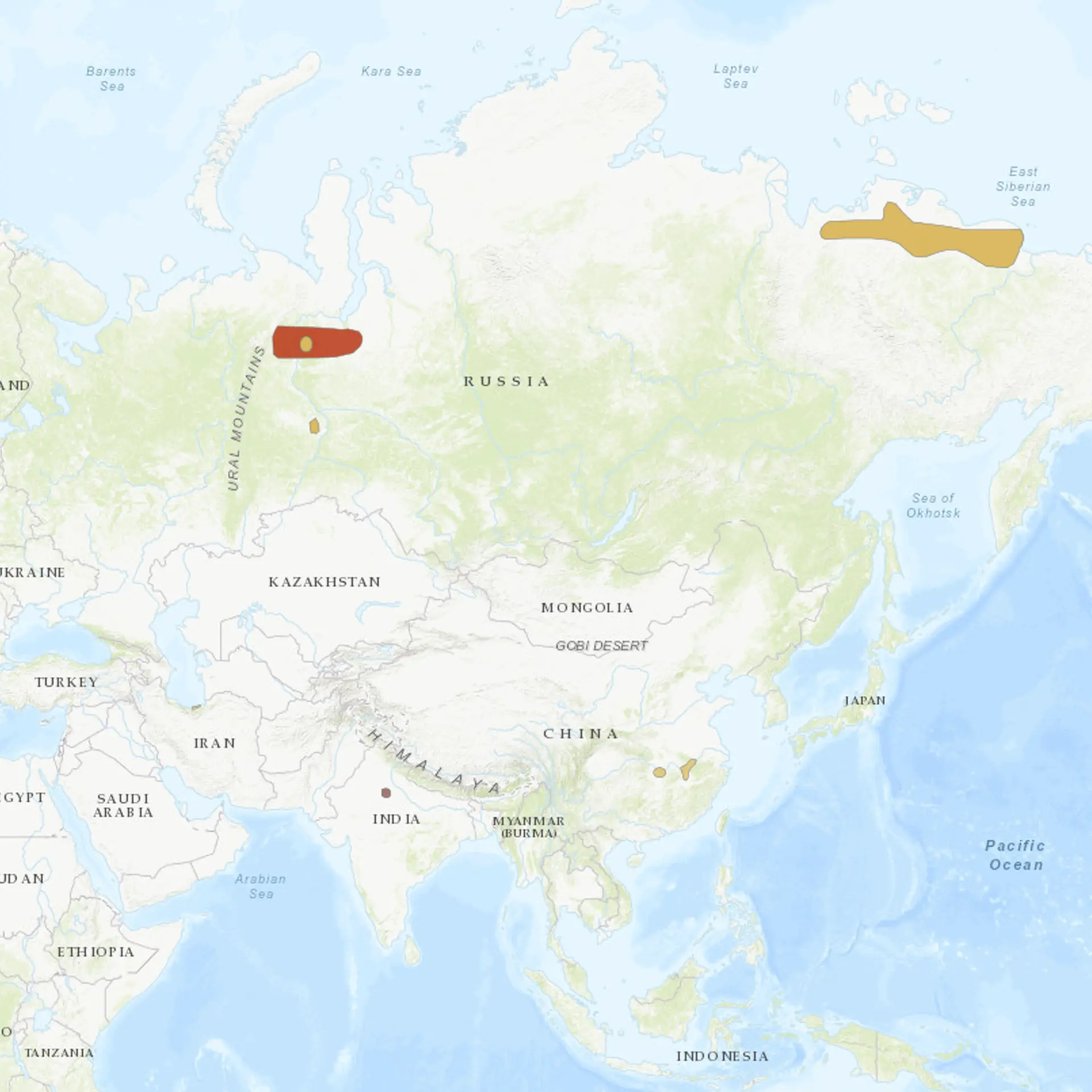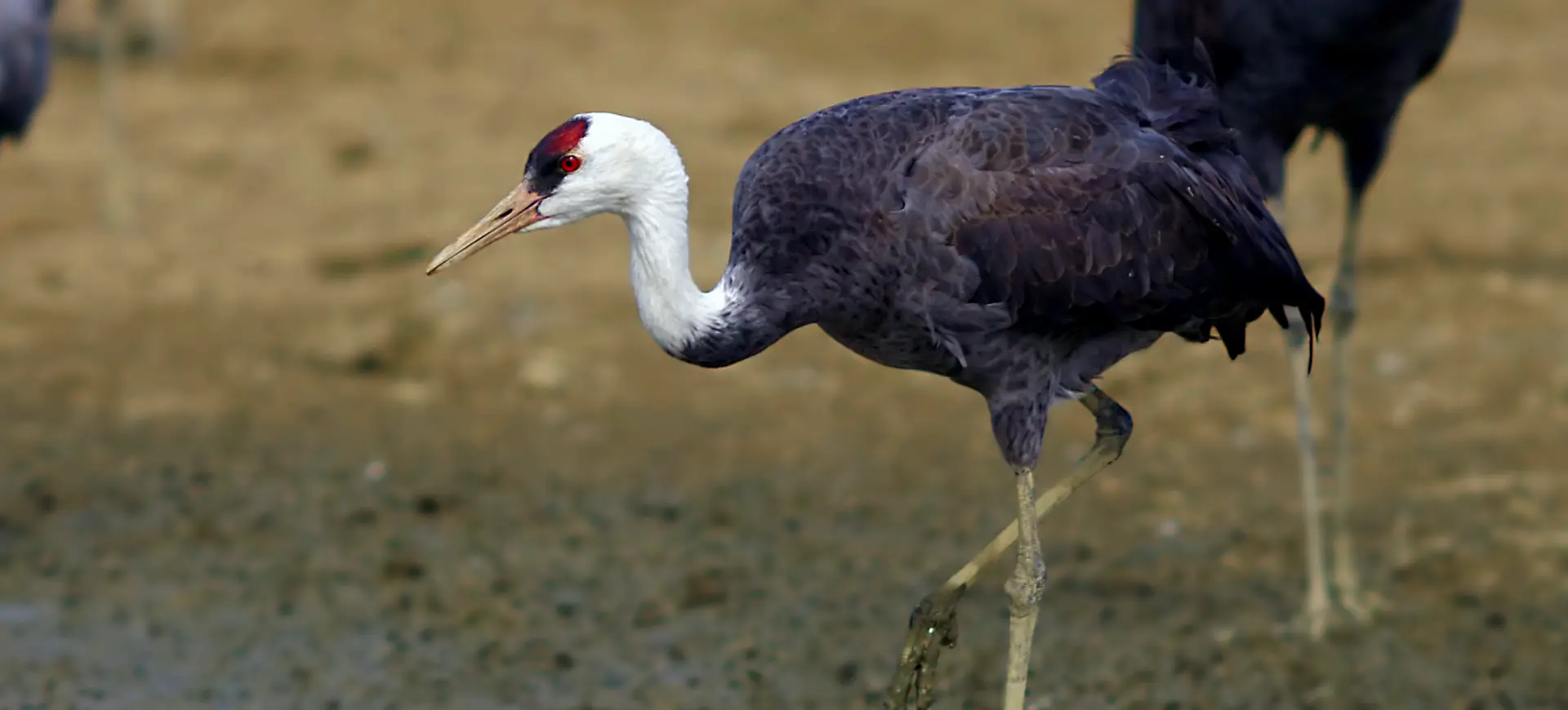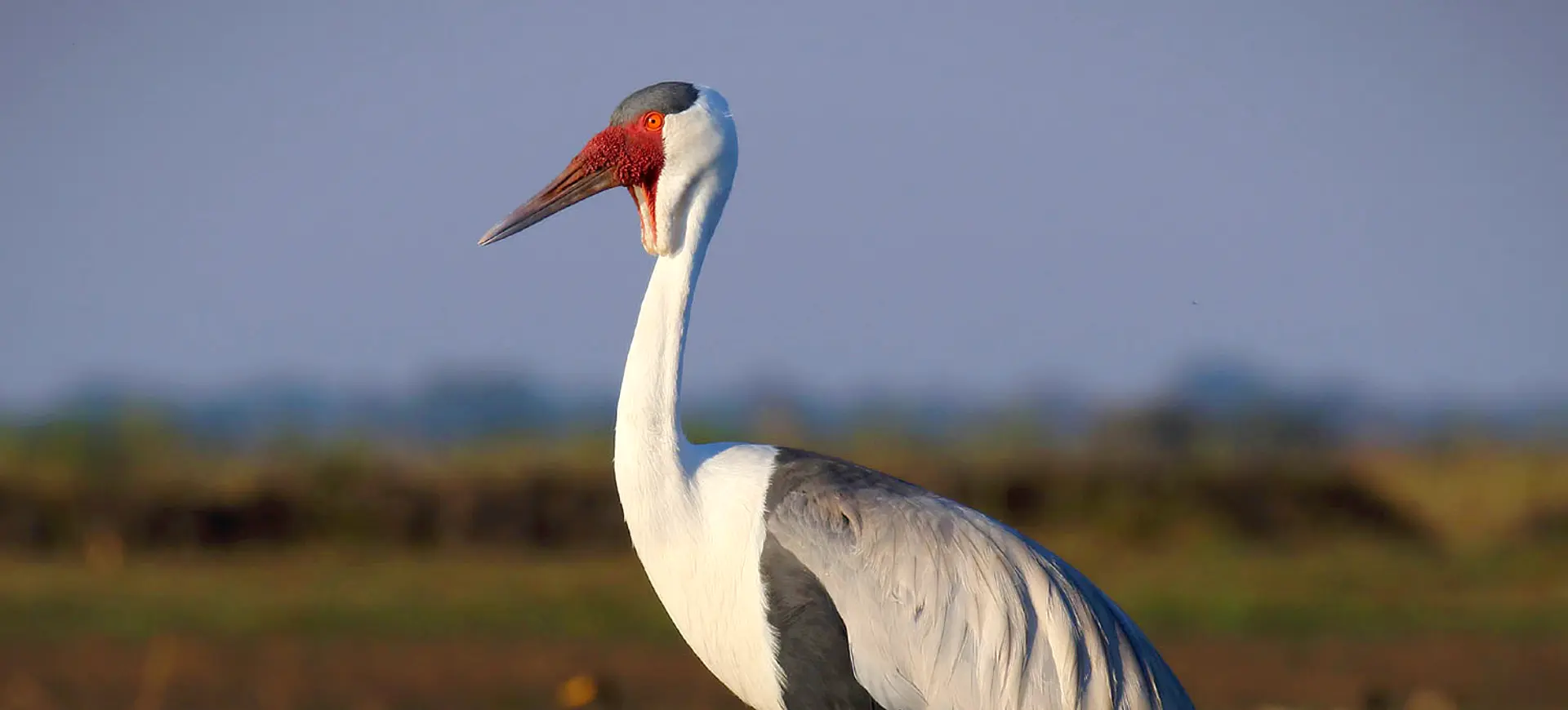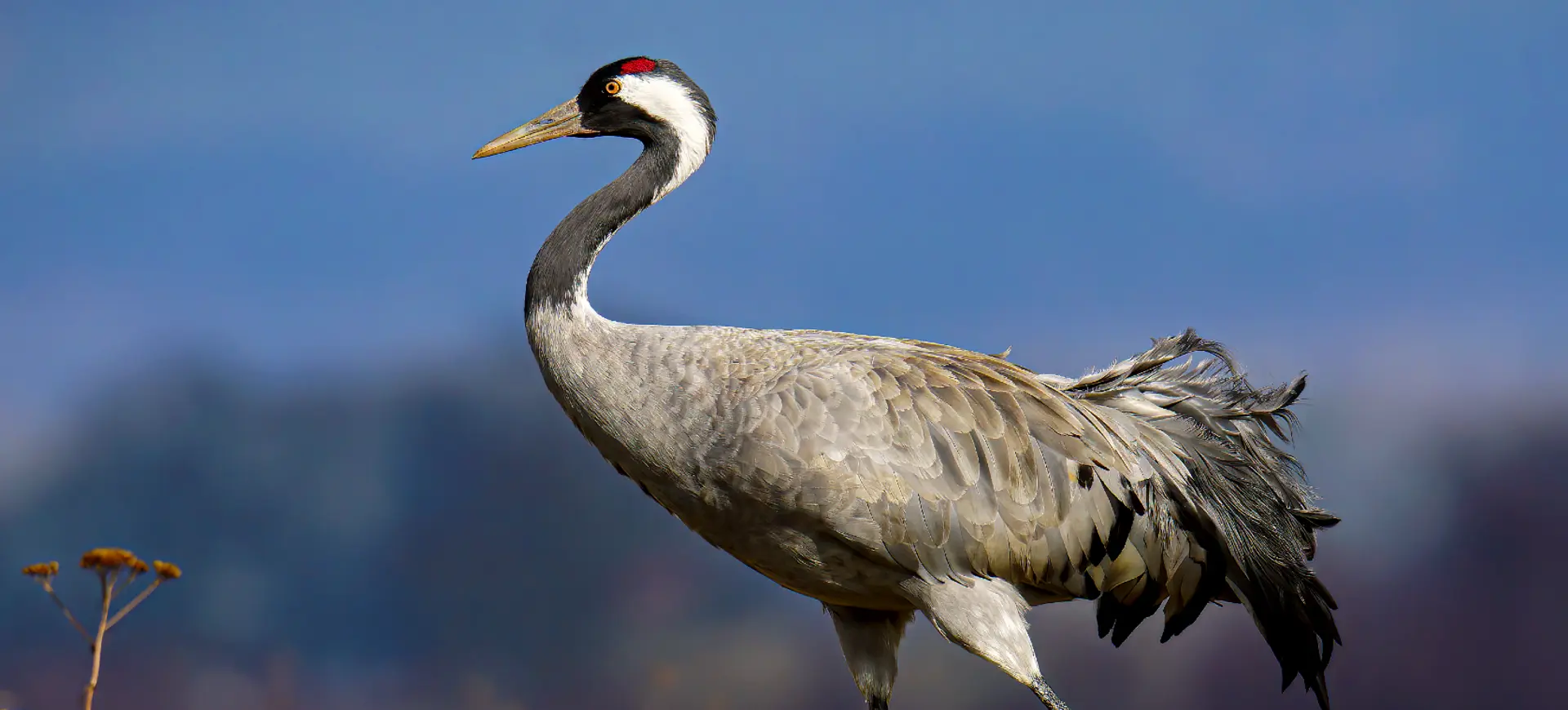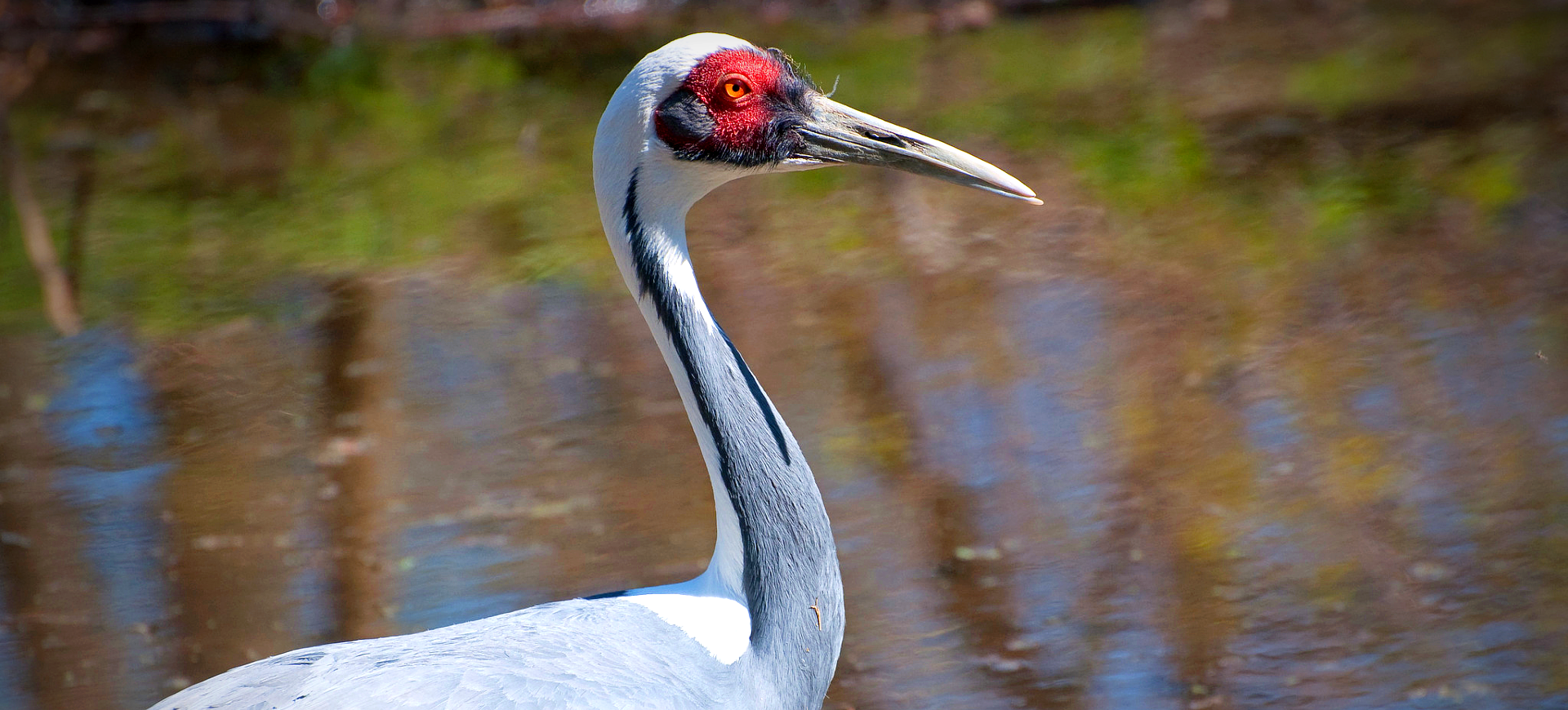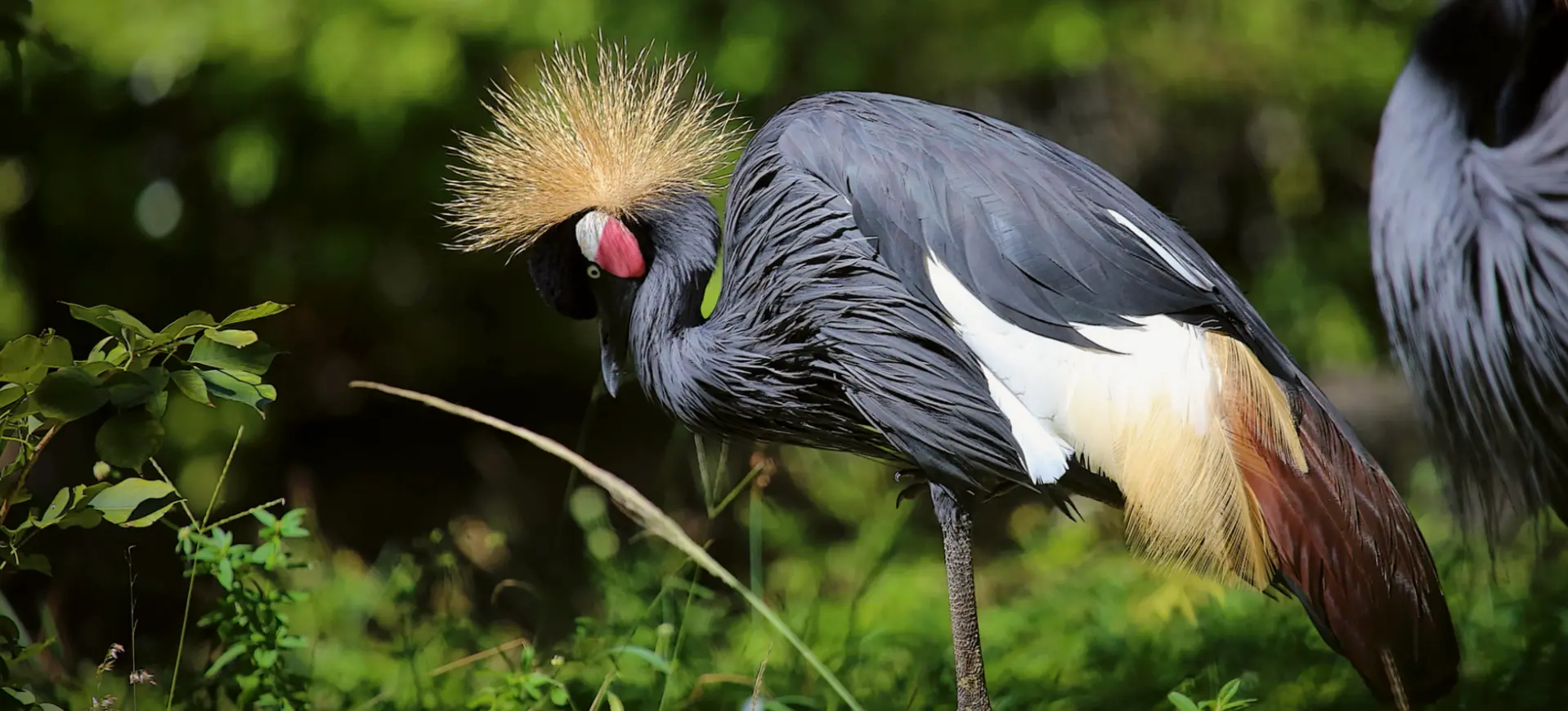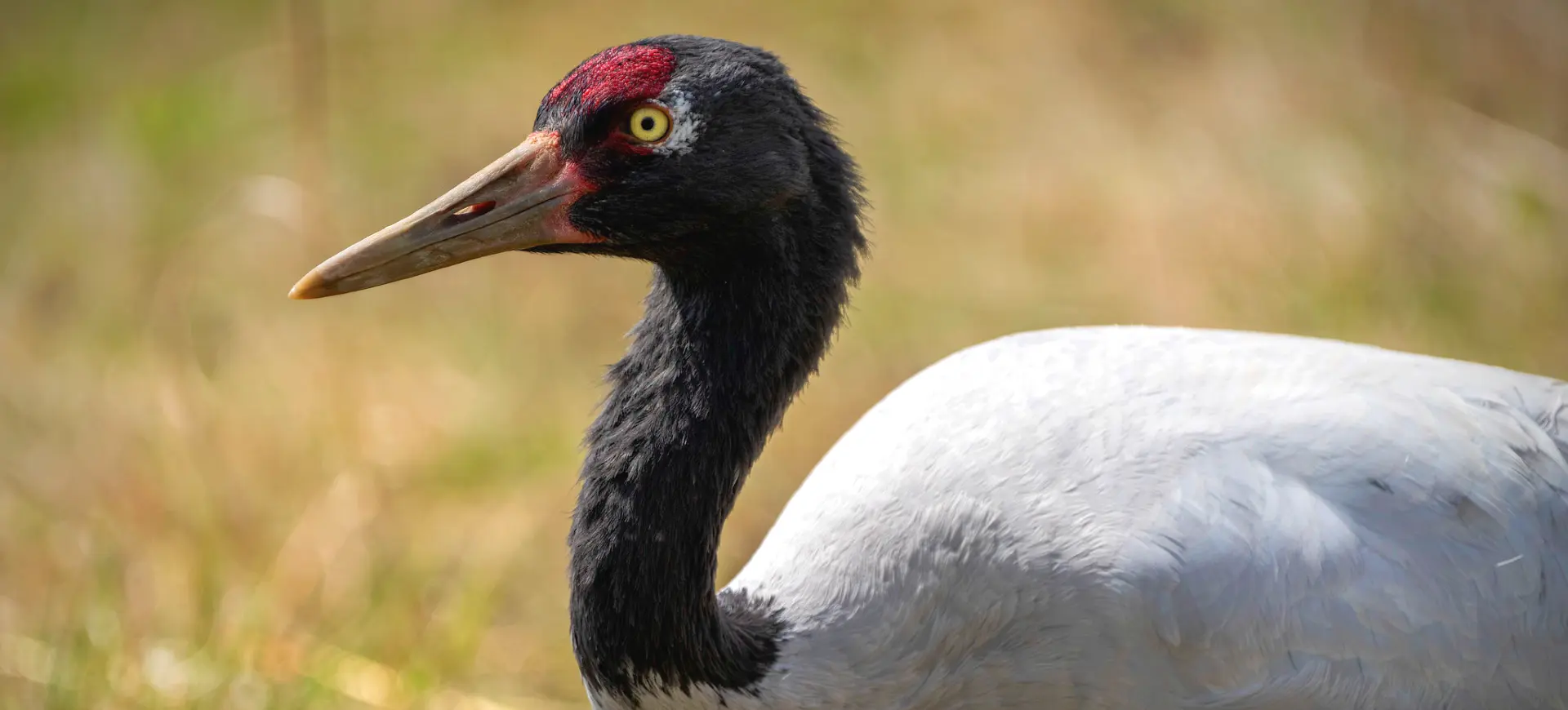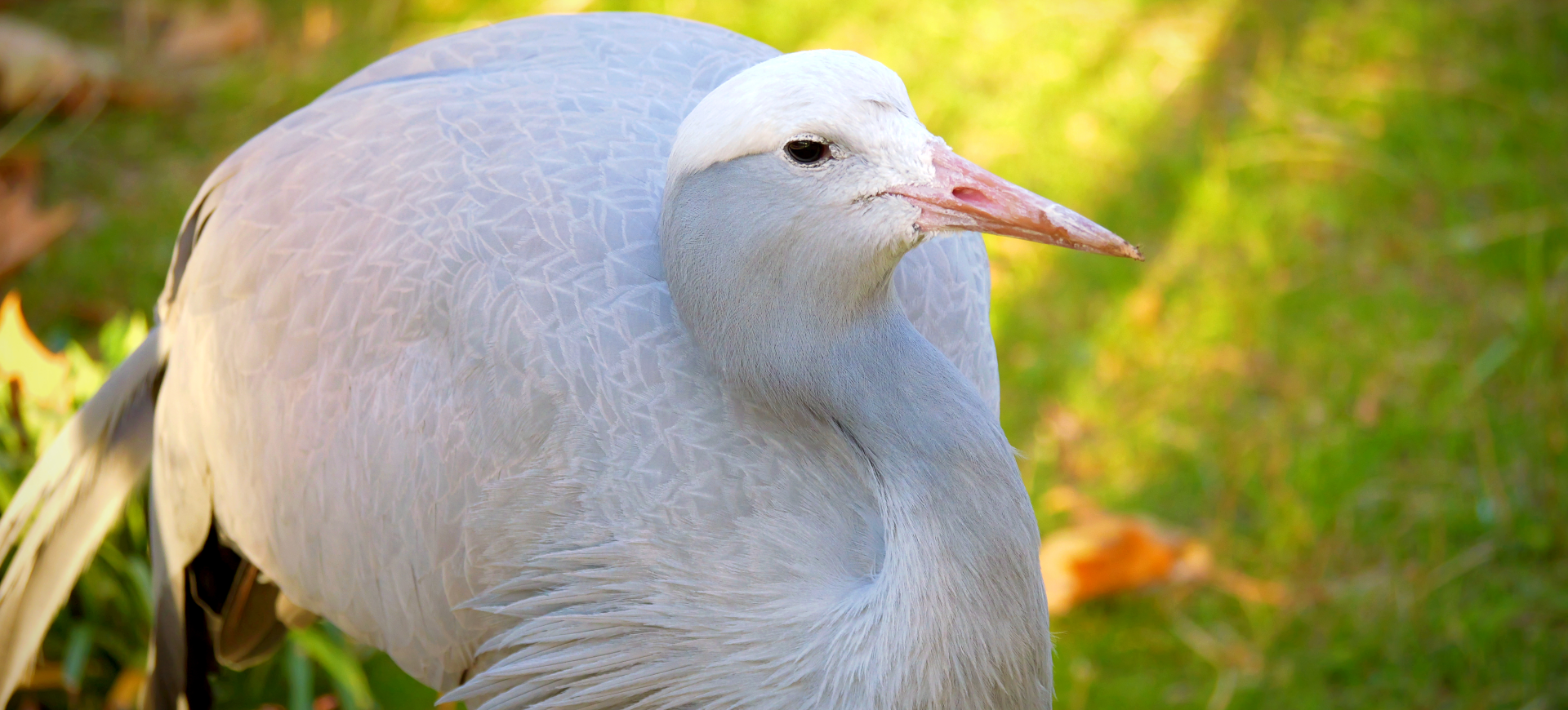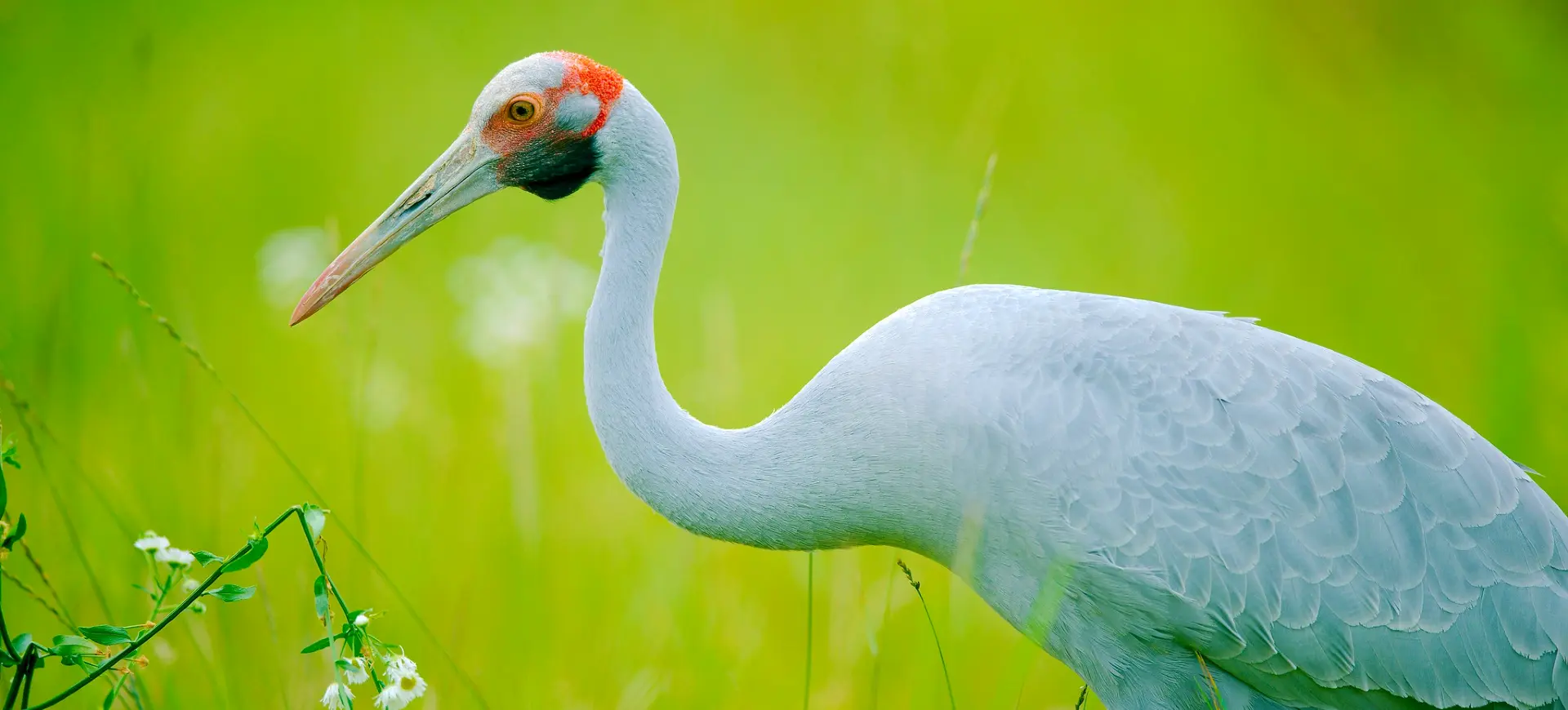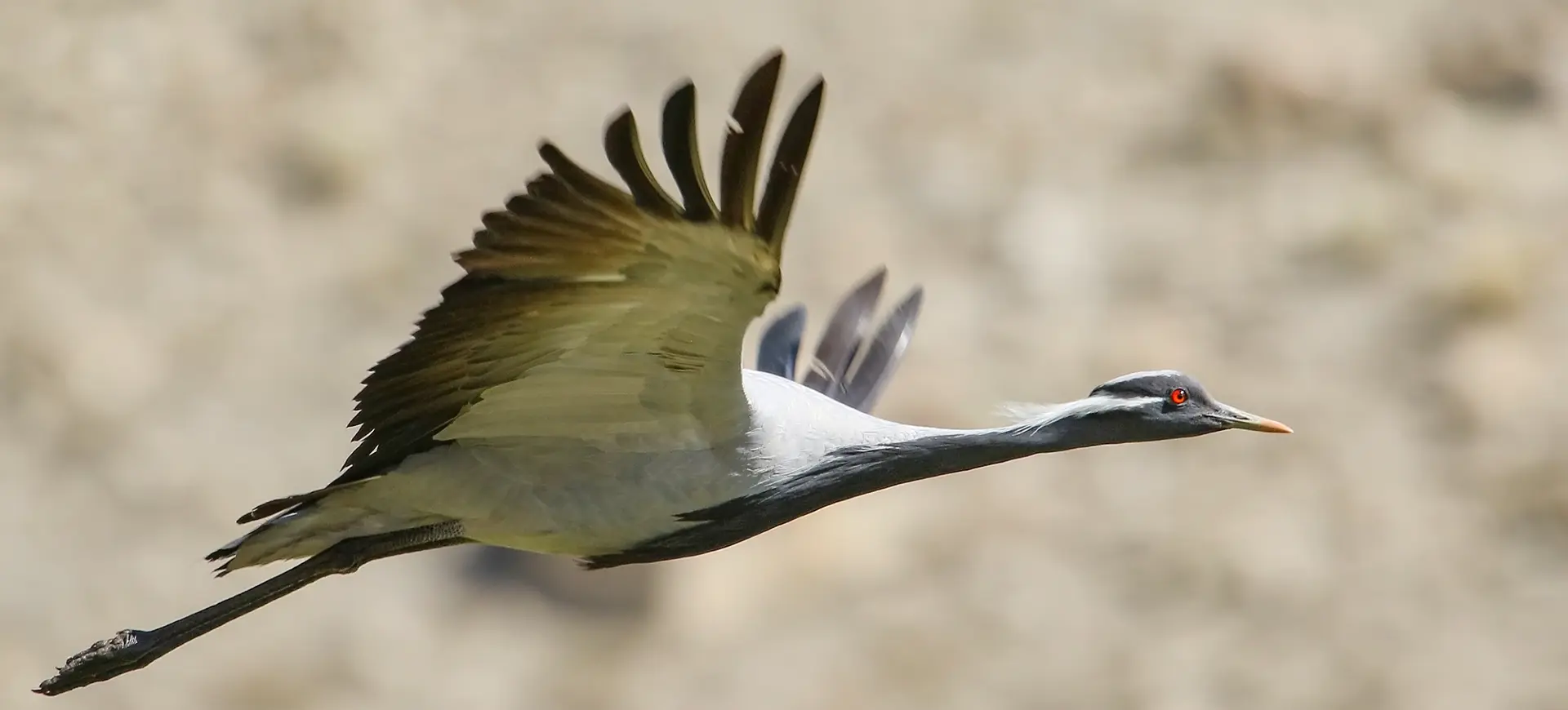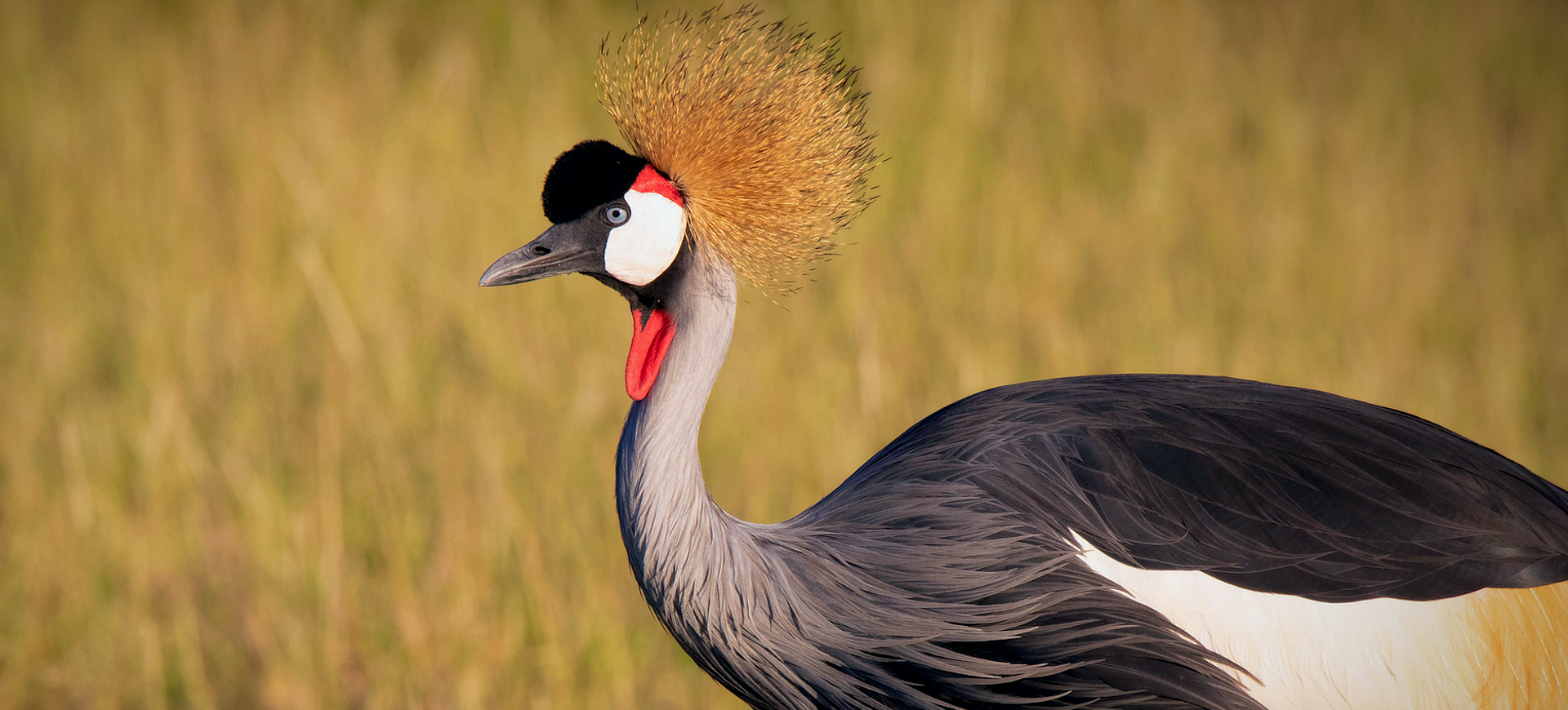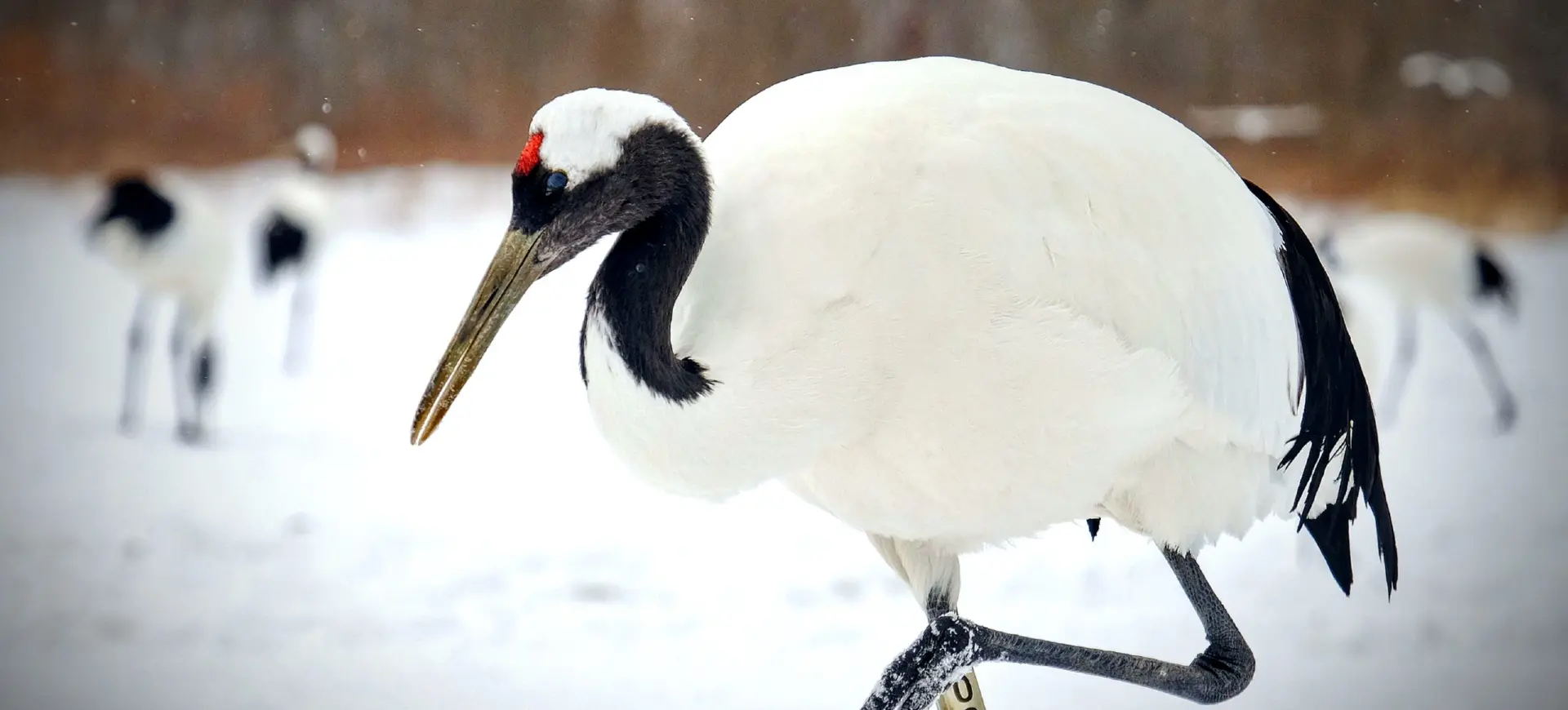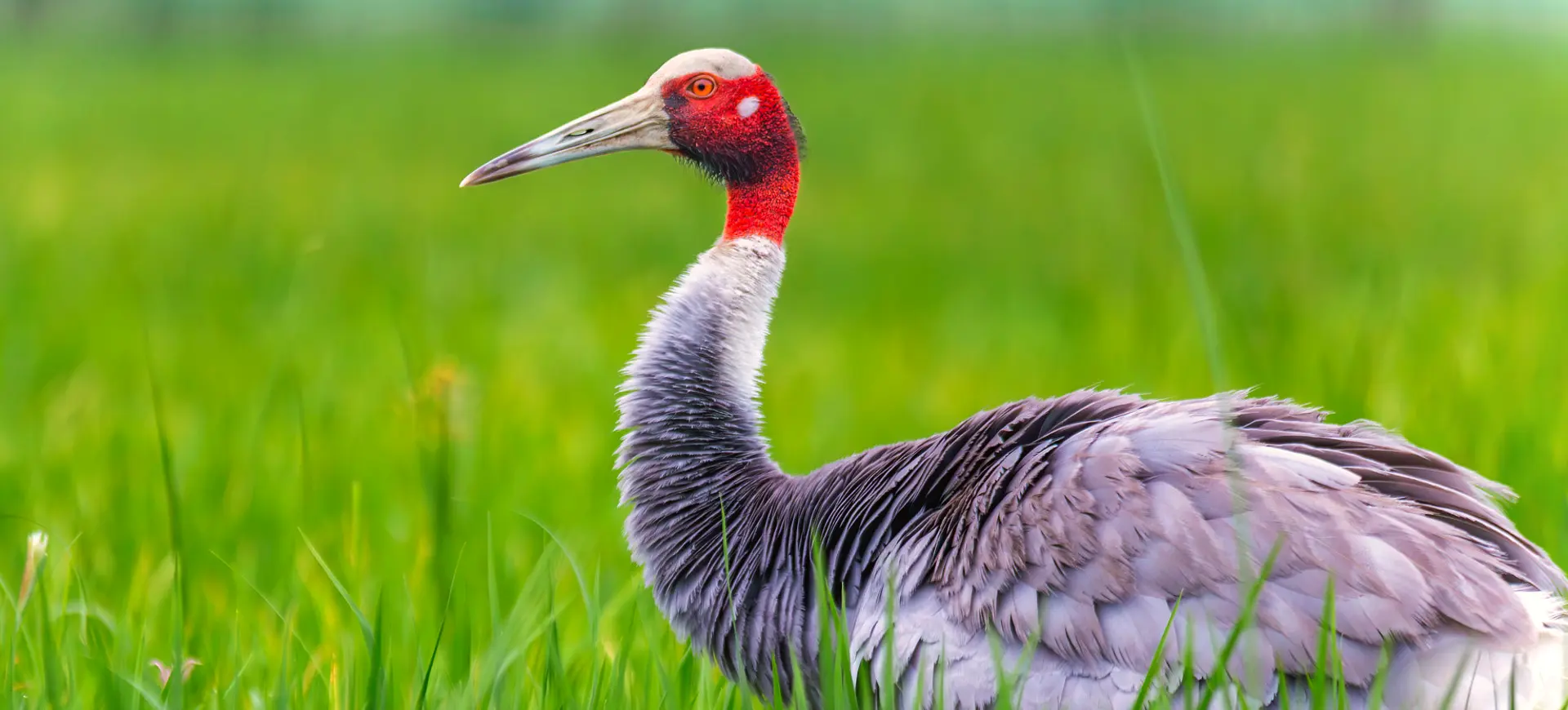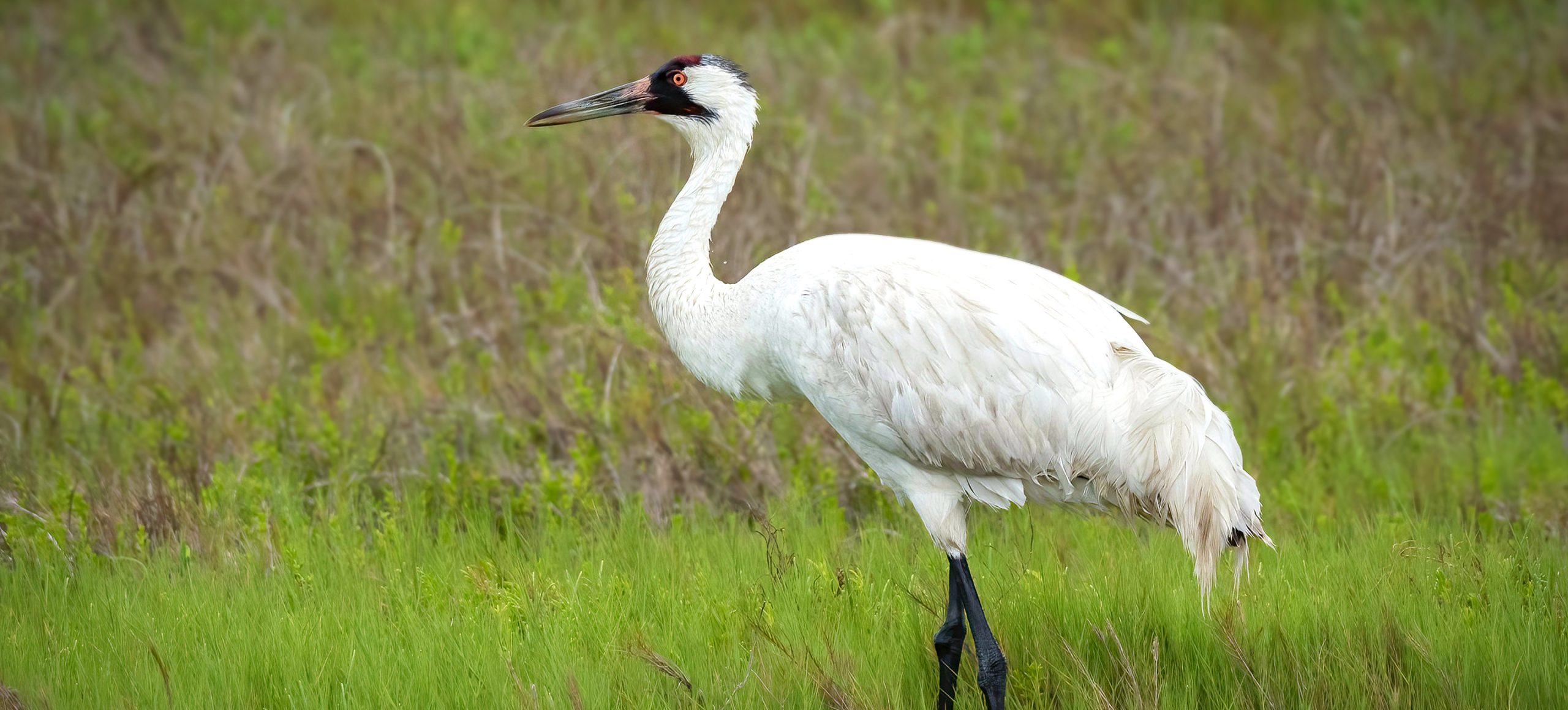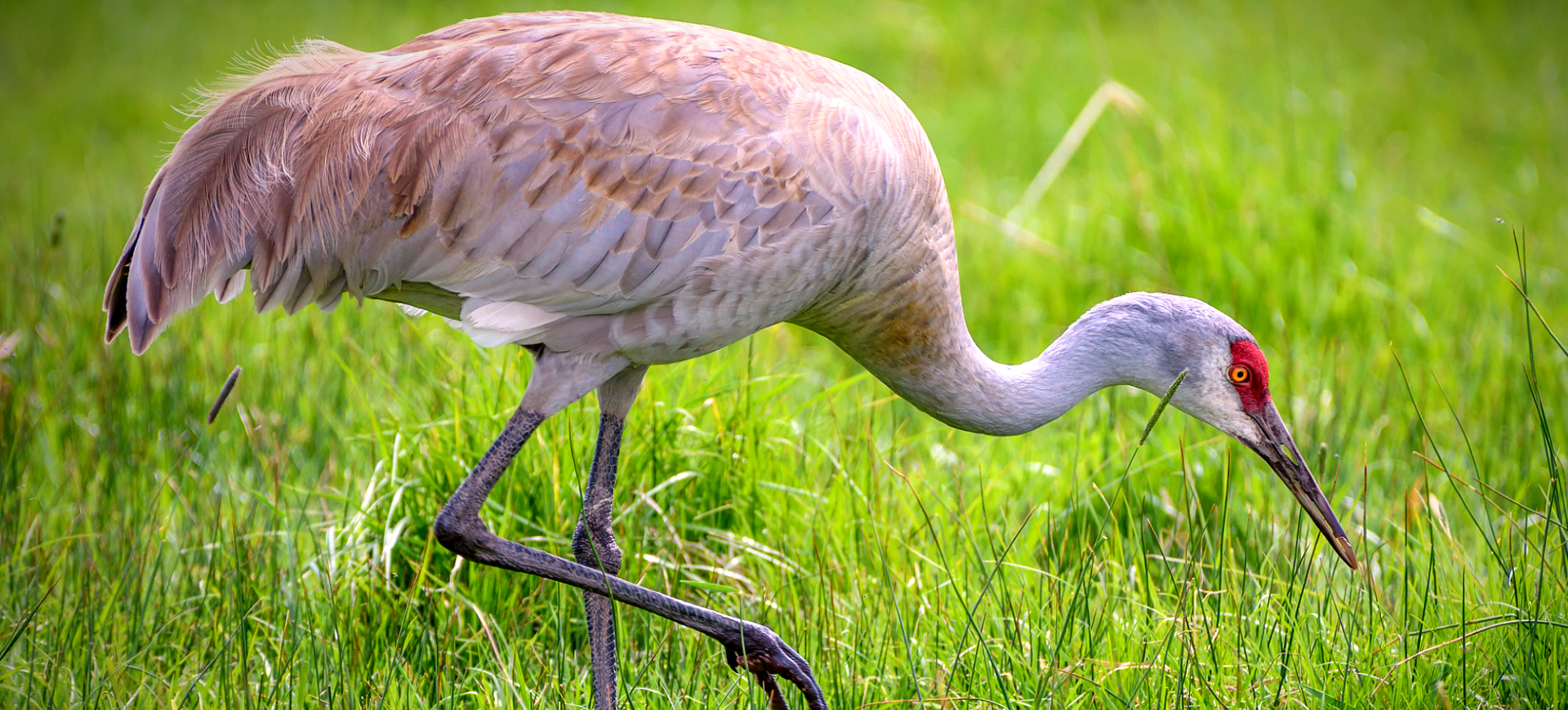Overview
The Siberian Crane is a critically endangered species known for its striking white plumage, black wingtips, and long red bill. It is a migratory bird, breeding in the high Arctic regions of Siberia and migrating thousands of kilometers to wintering grounds in China, India, and Iran. Historically widespread across Asia, the species has suffered significant population declines due to habitat loss, hunting, and changes in wetland management. Conservation efforts have been ongoing to protect this iconic species, which serves as a symbol of international cooperation in wildlife preservation.
During the breeding season, Siberian Cranes are found in remote tundra wetlands, where they build their nests in shallow, freshwater areas. These cranes are highly dependent on wetlands throughout their life cycle, requiring undisturbed, shallow water for nesting, feeding, and roosting. In winter, they migrate to warmer regions, relying on wetland habitats for foraging. The species is notable for its elegant, graceful behavior and is often seen wading through water with a slow, deliberate gait.
Siberian Cranes have faced a drastic decline in their population, mainly due to the loss of wetland habitats along their migratory routes. The western population once migrated to India is now virtually extinct, leaving a smaller eastern population that winters in China. The species is listed as critically endangered, making it one of the most threatened crane species in the world. Ongoing conservation programs focus on habitat protection, captive breeding, and international cooperation to save the remaining populations.
Taxonomy
Kingdom
Phylum
Class
Order
Family
Genus
Species
Type
Current distribution:
The current distribution of Siberian Cranes is restricted mainly to two regions: breeding grounds in the northeastern Siberian tundra and wintering grounds in China. The eastern population breeds in Yakutia, Russia, and migrates to China's lower Yangtze River basin, particularly Poyang Lake. Historically, there were also central and western populations, with the western group migrating to Iran and the central group wintering in India, but these populations are now functionally extinct. Occasional sightings in other regions, such as Central Asia, are likely vagrants that have deviated from the main migratory path.
The cranes follow traditional migratory routes, stopping at specific wetlands to rest and refuel during their long journeys. Conservation of these stopover sites is critical, as the birds rely on them to survive migration. Habitat loss, especially in their wintering and stopover sites, remains one of the biggest challenges for conservation. Collaborative international efforts are needed to preserve these essential habitats across multiple countries.
Physical Description:
The Siberian Crane is distinguished by its all-white plumage, which contrasts sharply with its black wingtips, which are visible only in flight. It has a long, red bill and bright red skin around the eyes, which intensify in color during the breeding season. The legs are long and pinkish-red, adapted for wading through shallow water in search of food. Adult Siberian Cranes are slightly taller and more slender than other crane species, giving them a graceful and elegant appearance.
Juvenile Siberian Cranes are mostly white but have a brownish or rusty tint to their feathers, which they lose as they mature. Their body structure is adapted for long-distance flight, with strong wings allowing them to migrate thousands of kilometers yearly. During courtship and other social interactions, they perform various dances, including jumps, wing flapping, and bowing. The crane’s pure white plumage helps it blend into the snowy tundra during the breeding season, providing camouflage from predators.

Lifespan: Wild: ~30 Years || Captivity: ~50 Years

Weight: Male & Female: 11-19 lbs (5-8.5 kg)

Length: Male & Female: 51-55 in (130-140 cm)

Height: Male & Female: 51-55 in (130-140 cm)

Wingspan: Male & Female: 83-90 in (210-230 cm)

Top Speed: 37 mph (60 km/h)
Characteristic:
Native Habitat:
Siberian Cranes breed in the high Arctic tundra, particularly in the northeastern regions of Siberia. They prefer shallow, freshwater wetlands surrounded by open tundra, where they build nests on small islands or patches of raised ground. These areas provide safety from predators and abundant food resources during the short Arctic summer. The nesting sites are remote and undisturbed, critical for successfully rearing chicks.
During winter, the cranes migrate to subtropical wetlands, relying on large, shallow lakes, marshes, and floodplains. Historically, they wintered in northern India, parts of Iran, and China, but the western populations have largely disappeared. The remaining eastern population primarily winters in the Yangtze River floodplains in China, particularly in Poyang Lake, now the most important wintering site. Habitat protection in these key areas is essential for the survival of the remaining populations.
Climate Zones:
Biomes:
Biogeographical Realms:
Continents:
Countries:
Diet:
Diet & Feeding Habits:
Siberian Cranes are primarily omnivorous, with a diet that changes depending on the season and availability of food. During the tundra’s breeding season, they consume various aquatic plants, roots, tubers, and small vertebrates like fish, amphibians, and insects. They use their long bills to probe into the soft mud of wetlands to extract food, relying heavily on water plants that grow in shallow areas. In their wintering grounds, they feed mainly on tubers, seeds, and grains, particularly in areas where wetlands have been converted into agricultural fields.
The cranes’ feeding habits make them sensitive to changes in water levels, as they need shallow wetlands to access their preferred food sources. They travel considerable distances within their wintering range in search of suitable foraging areas, especially when wetland conditions change. Their reliance on specific types of wetland plants has made them vulnerable to habitat changes caused by agriculture, water diversion, and climate change. Conservation efforts focus on protecting key wetland areas that serve as critical feeding sites along their migratory routes.
Mating Behavior:
Mating Description:
Siberian Cranes are monogamous, forming long-term pair bonds lasting many years. Courtship involves elaborate displays, including synchronized dancing, unison calling, and various intricate movements such as head bobbing and leaps. These displays not only strengthen the pair bond but also help establish territory and signal readiness to mate. Once a pair is formed, they choose a nesting site together, often returning to the same location each year if conditions remain favorable.
The female typically lays two eggs, but often only one chick survives to fledge, as the stronger chick may outcompete the weaker one. Both parents are involved in incubation, which lasts about 29-31 days, and they continue to care for the chick until it is capable of independent flight. The breeding season is short, reflecting the brief Arctic summer, and the timing is crucial to ensure chicks are strong enough to migrate south in autumn. Successful breeding highly depends on undisturbed nesting sites, which are increasingly threatened by human activities and climate change.
Reproduction Season:
Birth Type:
Pregnancy Duration:
Female Name:
Male Name:
Baby Name:
Social Structure Description:
Siberian Cranes are known for their strong social bonds, particularly between mated pairs, which often stay together for life. During migration, they travel in small family groups or flocks, using their distinctive calls to stay connected while flying. Outside the breeding season, they can be found in larger groups at wintering sites, where social interactions are important for locating food and avoiding predators. However, during breeding, pairs become highly territorial and isolate themselves from other cranes to raise their young.
Communication among Siberian Cranes includes a range of vocalizations, body language, and synchronized movements, especially during courtship and bonding. Young cranes learn migratory routes and foraging skills by following their parents during their first migration. The species’ social structure is critical for maintaining population cohesion, particularly during long-distance migration, which requires coordination and group behavior. Ensuring that cranes have safe and secure habitats throughout their life stages is essential for supporting these social structures.
Groups:
Conservation Status:
Population Trend:
The Siberian Crane population has drastically declined over the past century, with the western and central populations almost completely disappearing. The remaining eastern population, migrating between Siberia and China, is relatively stable but still faces numerous threats. Conservation programs have focused on habitat protection, especially in China’s Poyang Lake, which supports most of the wintering population. Captive breeding and reintroduction efforts are ongoing, but re-establishing migratory behaviors in captive-bred birds has proven challenging.
Intensive conservation measures, including international cooperation to secure migratory routes and stopover sites, are crucial for the species’ survival. Regular monitoring and research help track population trends and identify key threats, enabling more targeted conservation actions. Despite some success, the species remains critically endangered due to the continued loss of wetlands and the effects of climate change. Without sustained and enhanced conservation efforts, the future of the Siberian Crane remains uncertain.
Population Threats:
The biggest threat to Siberian Cranes is habitat loss, particularly the degradation of wetlands they rely on for breeding, migration, and wintering. Wetland drainage for agriculture, industrial development, and urban expansion has significantly reduced suitable habitats across their range. Climate change also poses a severe risk by altering water availability in critical wetland areas, impacting food availability and nesting conditions. Hunting and poaching, though less common now due to increased legal protections, historically contributed to their population decline, especially along migratory routes.
Pollution, including water contamination from pesticides and industrial waste, affects the health of the wetlands on which these cranes depend. Changes in water management practices, such as dam construction and water diversion, can drastically alter wetland ecosystems, making them unsuitable for cranes. In regions like China, efforts to manage water levels for agriculture have conflicted with the needs of the cranes at their wintering sites. Addressing these threats requires cooperation between governments, local communities, and conservation organizations to implement effective and sustainable water and land management practices.
Conservation Efforts:
International cooperation has been key to Siberian Crane conservation, with countries like Russia, China, and Iran working together to protect critical habitats. The Siberian Crane Wetland Project, initiated by international organizations, aims to conserve wetlands across their migratory range, focusing on breeding and wintering sites. In China, efforts at Poyang Lake include habitat protection, water management, and community engagement to preserve the cranes’ wintering grounds. Captive breeding programs have been established in several countries to increase genetic diversity and support potential reintroduction projects.
Educational campaigns have raised awareness about the importance of wetlands and the threats facing the Siberian Crane, helping to garner local and international support for conservation actions. Monitoring crane populations and migratory patterns has been essential in understanding their behavior and adjusting conservation strategies accordingly. Restoration of degraded wetlands along migratory routes is also part of the conservation approach, ensuring cranes have safe resting and feeding sites during their long journeys. Despite these efforts, continuous habitat fragmentation and climate change challenges necessitate ongoing adaptive management.
Additional Resources:
Fun Facts
- The Siberian Crane can migrate over 3,000 miles (5,000 km) from its breeding grounds to wintering sites.
- They are known for their graceful, elegant courtship dances involving bows, leaps, and synchronized movements.
- Siberian Cranes have one of the longest migrations among crane species, traveling across several countries.
- They are sometimes called “snow cranes” due to their pure white plumage.
- Poyang Lake in China is the most important wintering site, hosting over 95% of the eastern population.
- The cranes use thermal air currents to soar high and conserve energy during migration.
- They were once a common sight in northern India, but habitat loss has led to the near extinction of the western population.
- Siberian Cranes are culturally significant in many parts of Asia, symbolizing longevity and good fortune.
- They are listed under the Convention on Migratory Species, which promotes international cooperation for their conservation.
- Efforts to teach captive-bred cranes to migrate using ultra-light aircraft have been explored to help rebuild wild populations.


